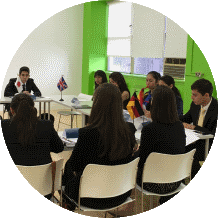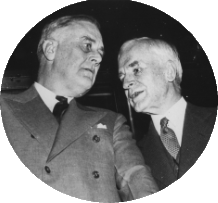U.S. Department of State
Bureau of Educational and Cultural Affairs Private Sector Exchange
February 1, 2019
Guidance Directive 2019-01
Clarifying the Teacher Exchange Program Regulations at 22 CFR 62.24 and Superseding All Previous Category-Specific Guidance Directives
This Guidance Directive clarifies the Exchange Visitor Program (EVP) regulations governing the Teacher category [22 CFR 62.24] with emphasis on the following provisions:
- Reinforcing the Category’s Purpose and Intent
- Exchange Visitor Eligibility Criteria and Related Use of SEVIS
- Temporary Employment of Exchange Teachers
- Compensation
- Transparency and Reasonable Fees
- Teacher Category: Purpose and Intent
The Teacher category of the EVP promotes the exchange of foreign teachers to U.S. host schools and enhances mutual understanding between the people of the United States and other countries. Exchange teachers sharpen their professional skills and are required to participate in cross- cultural activities in U.S. schools and communities. They return home to share their experiences and increased knowledge of the United States and its educational system, culture, and society [22 CFR 62.24(a)].
Qualified foreign teachers teach full-time in accredited academic public and private U.S. primary and secondary schools (K-12) [22 CFR 62.24(a)(c)(1)]. The Department does not consider K-12 institutions offering predominantly vocational or technical programs academic for purposes of exchange teachers’ placements. Exchange teachers may also teach at the pre-kindergarten level, but only in language immersion programs at accredited schools for at least fifty percent of the school day where regular courses of study are in a language not native to the majority of the student population [22 CFR 62.24(c)(6)].
- Exchange Visitor Eligibility Criteria and Related Use of SEVIS
A full-time teaching position requires a minimum of 32 hours per week of teaching or teaching- related administrative activities [22 CFR 62.24(c)(2)] such as lesson planning, curriculum development, grading, and field trip planning for students. A full-time exchange teacher must be a teacher of record, not a teacher’s assistant/aide, substitute teacher, or someone holding a non- instructional position. The following Position Codes (occupation in their home country) are the only codes that sponsors should use when creating a Form DS-2019 in the Teacher category in the Student and Exchange Visitor Information System (SEVIS):
- 222 Secondary School Teacher or Staff
- 231 Elementary Principal, Teacher or Staff
- 242 Special School, Institute, or Vocational Teacher or Staff
Sponsors must not place exchange teachers in positions not allowed by the regulations, specifically principal, assistant principal, school director, guidance counselor, librarian, and teacher trainer. Although these are not approved activities for placements in the Teacher category, teacher applicants may use both their teaching and teaching-related administrative experience abroad to qualify for the Teacher category. Accordingly, sponsors should not select any of the following Subject Field Codes (occupation during the exchange program in the U.S.) in SEVIS:
- Counselor Education/School Counselling and Guidance Services (13.1101);
- Educational Administration and Supervision, Other (13.0499);
- Educational Leadership and Administration, General (13.0401);
- Elementary and Middle School Administration/Principalship (13.0408);
- Higher Education/Higher Education Administration (13.0406);
- Psychology Teacher Education (13.1335);
- Sales and Marketing Operations/Marketing and Distribution Teacher Education (13.1310);
- Secondary School Administration/Principalship (13.0409);
- Student Counselling and Personnel Services (13.1102);
- Student Counselling and Personnel Services, Other (13.1199);
- School Librarians/School Library Media Specialist (13.1334);
- Speech-Language Pathology/Pathologist (51.0203);
- Superintendency and Educational System Administration (13.0411);
- Teacher Assistant/Aide (13.1501);
- Teaching Assistants/Aides, Other (13.1599);
- Teacher Education and Professional Development/Specific Levels and Methods, Other (13.1299);
- Teacher Education and Professional Development/Specific Subject Areas, Other (13.1399); or
- Teacher Education/Multiple Levels (13.1206).
- Temporary Employment of Exchange Teachers
Sponsors may not use the Teacher category to recruit and train foreign teachers for permanent employment in the United States. An exchange visitor’s placement as a teacher at a primary or secondary accredited academic institution must be temporary, even if the school normally classifies the teaching position as permanent [22 CFR 62.24(f)(4)]. The Department expects every exchange teacher to return to his or her home country upon completion of the exchange programs. That teacher will be eligible to participate in another teacher exchange program provided that he or she has resided outside of the United States for at least two years following the successful completion of the original exchange program and continues to meet the eligibility requirements [22 CFR 62.24(l)].
- Teacher Compensation
Exchange teachers must teach full-time at a primary or secondary accredited educational institution in the United States. Their compensation must be commensurate with those of U.S. teachers with similar responsibilities and similar educational background [22 CFR 62.24(f)(5)]. This applies whether the school is a public or private one and whether an exchange teacher is paid by a U.S. public school district or some other source. Sponsors should be prepared to provide evidence of exchange teachers’ full-time positions and commensurate compensation upon the Department’s request [22 CFR 62.10(e)].
- Transparency and “Reasonable” Program Fees
Program sponsors are required to list the information outlined in 22 CFR 62.10(b)(c) on their websites and include in their recruiting materials a general summary of program fees and costs. At a minimum, the summary should include the following information: sponsor fee; foreign or domestic third-party or partner fees; visa application fee; SEVIS fee; insurance costs; estimates for food, housing and local transportation costs; expected work-related deductions; and estimates or ranges for all other fees charged for, and significant general costs related to participation in, the Teacher category [22 CFR 62.24(g)]. Sponsors are required to disclose to applicants all anticipated program costs before such applicants enter into contracts with host schools [22 CFR 62.24(g)(1)(2)].
The Department reminds sponsors and their third parties that bonded labor practices and price gouging are contrary to the spirit of the EVP and its public diplomacy function, which is to foster good will and citizen ambassadorship. Fees charged exchange visitors participating in the Teacher category must be reasonable. [The following are examples of overcharging:]
- As much as 10 percent of a teacher’s annual gross salary as a recruitment
- Fees/charges that are substantially higher than market-based costs for similar services






